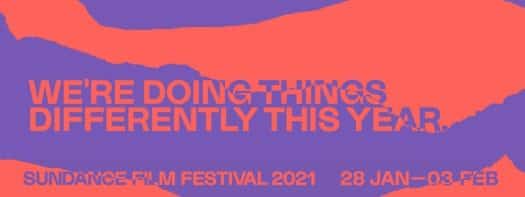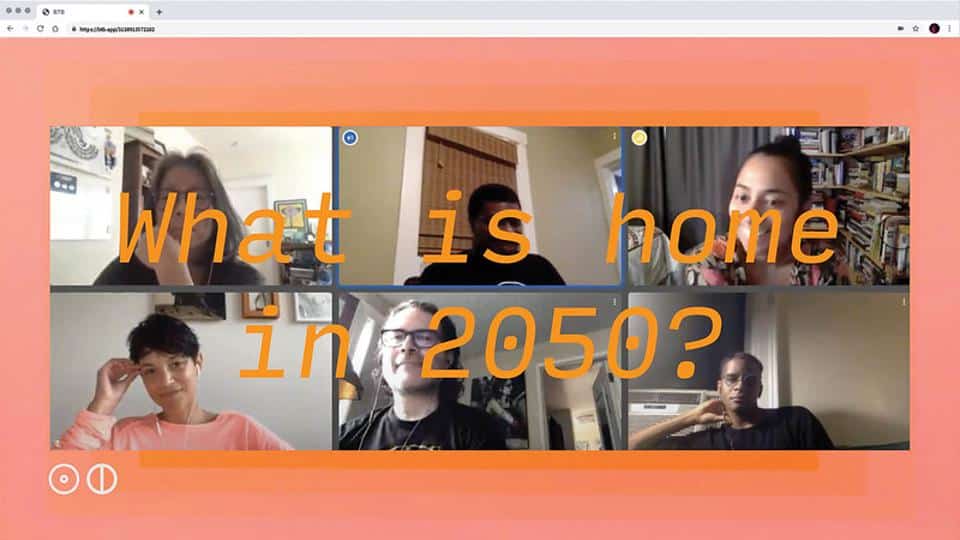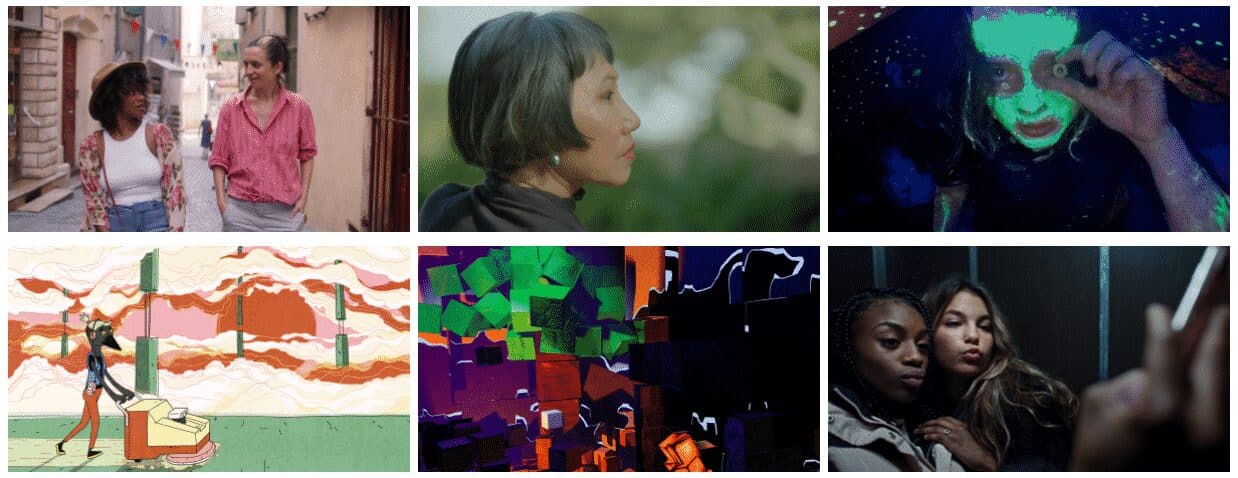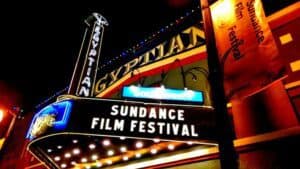The New Frontier Program at the Sundance Film Festival has always positioned itself at the intersection of film, art, and technology. Its experimental projects in VR have been groundbreaking, from Nonny de la Peña’s ‘Hunger in Los Angeles,’ the first-ever VR documentary to be showcased at the Festival (2012) through this year’s remarkable projects, many of which focused on movement and play in VR. With the pandemic still the reality of our lives, Sundance 2021 finds itself having to transition that spirit to a virtual environment.
It’s a development that works both ways. First, we’ll lose access to the amazing 6DOF (six degrees of freedom) full VR experiences that are a hallmark of the Festival. Since the Festival runs from Jan. 28 – Feb. 3, it’s just too early to be offering access to full VR experiences with headsets shared with the public. The only way around that would be to port those projects to SteamVR or the Oculus Store.
But on the positive side, doing a virtual VR program will make the 360 video experiences available to a far wider audience. The Tribeca Film Festival went the same route though their projects were only available online for two weeks. And following the lead of the Venice Film Festival in their partnership with the Northwest Film Center and Portland Art Museum, Sundance will offer limited on-site access around the U.S. The screenings will take place at drive-in theaters, independent art cinemas, and cultural organizations, all of which will follow COVID-19 safety protocols.
Attending the Festival in person has always been an expensive proposition (especially finding a reasonably priced hotel in Park City). And many of the VR projects never find an audience outside of those who make the trek to Park City. While we’ll have to see what the cost is for the online event, virtualizing the Festival should help democratize the audience reach. If there’s one oversight here, it’s that there should be on-site screening locations in other countries given Sundance’s support for international artists and filmmakers.
The Sundance Festival in a Virtual Environment

The Sundance 2021 will be built on a bespoke spatialized platform, developed in partnership with digital experience agency Active Theory. They’ve done some fascinating interactive experiments in VR and in using WebGL and WebXR for cross-platform scalability. The virtual environment will be accessible via both PC and VR headsets to minimize digital divide issues as much as possible. The Festival will include a fully immersive and social cinema, Cinema House, and a Film Party site with multiple screens and virtual rooms accessible to accredited Festival goers.
The virtual environment will be designed as three spatialized digital venues that will be orbiting the Earth in conjunction with the International Space Station. Shari Frilot, Senior Programmer, and New Frontier Chief Curator described the layout,
More than ever, we need to gather our community in a meaningful way. This is why New Frontier has built three spatialized digital venues that orbit the earth right alongside the International Space Station. And at any time, Festivalgoers can take leave of the mothership to visit the astronauts aboard the Station, in the immersive experience Space Explorers: The ISS Experience, co-directed by Félix Lajeunesse and Paul Raphaël, or spend a night on earth, bar hopping in Amsterdam through IDFA DocLab’s do {not} play.
These virtual spaces orbiting our planet fit into the overarching theme of the New Frontier Program this year. Frilot continued,
The lineup of new media works this year challenge what we once knew to be true. Their works glisten with world building wisdom, and offer time machines that extract the cancer of colonial narratives planted deep within our biology.
Even as we return to some sense of normal in the coming year with a vaccine, hopefully, the virtual environments will become a permanent part of the Festival to bring the work of emerging artists to a broader audience. We’d also like to see the same happen with Burning Man which also went virtual this year. It’s a far less expensive cultural festival but still remains out of reach due to its remote location.
Virtual worlds have tremendous potential to breakdown financial and time barriers – hopefully, they won’t become only a pandemic-specific solution.
Zoom-meets-Fortnite-meets-Legoland

But creating a virtual world is about much more than the technical hurdles of hosting content. The challenge for Sundance 2021 will not be providing access to the VR projects but replicating the Festival’s social experience. Much of the magic of Sundance (as with any festival) comes from the impromptu gatherings and conversations with festival-goers before and after the actual content experiences – the VR projects and the films. How do you make social interaction in virtual spaces both spontaneous and natural? Or, as Frilot put it, how do you achieve that feeling of casually hanging out in a theater when you’re in a virtual space?
Sundance 2021 has one major advantage over others in that they’ve been able to watch what other festivals and conferences have done, not only in film but in the VR XR space. They were the last major film festival in 2020 to hold an on-site event. Shari Frilot shares how they watched others deal with the challenges.
Ever since SXSW was shut down, I watched the community of creative technologists immediately go to work to solve the problem of presenting XR work online. It was really quite moving, and it was really inspiring to watch—festival after festival implementing more and more of what was being developed, and getting better with each iteration. We definitely stand on the shoulders of all of the XR fests to date—so much learning that happened at each and every event.
An overarching goal of Sundance has always been to meet audiences where they are. And this year, they’re on Zoom, they’re gaming, and they’re in XR.
It had to be human in the way human looks like right now. And right now, we are all online and live streaming, while watching our children hangout with their friends inside multiplayer games and having a blast. So we decided we had to design a social platform that could be a home for hundreds of festivalgoers to celebrate the films and meet each other and the filmmakers that looks like Zoom-meets-Fortnite-meets-Legoland.
Sundance 2021 Program

The Sundance 2021 New Frontier Program will run from Jan. 28-Feb. 3 and is supported by the John D. and Catherine T. MacArthur Foundation, Unity Technologies, Adobe, Dell Technologies, The Walt Disney Studios’ StudioLAB, and Oculus from Facebook.
Here is a quick rundown of the New Frontier VR projects:
4 Feet High VR / Argentina, France (Lead Artists: María Belén Poncio, Rosario Perazolo Masjoan, Damian Turkieh, Ezequiel Lenardón, Key Collaborators: Marie Blondiaux, Marcos Rostagno, Eugenia Foguel, Matias Benedetti, Manuel Yeri, Martin Lopez Funes, Guillermo Mena) — Juana, a 17-year-old wheelchair user, aims to explore her sexuality but is ashamed of her body. Trying to find her place in a new high school, she will go through failure, friendship, fear, and politics until she builds her own pride. Cast: Marisol Agostina Irigoyen, Florencia Licera, Marcio Ramses, Natalia Di Cienzo, Francisca Spinotti.
7 Sounds / U.S.A. (Lead Artist: Sam Green, Key Collaborator: JD Samson) — An immersive live-streamed audio-video work exploring the universal influence of sound, weaving seven specific audio recordings into a meditation on the power of sound to bend time, cross borders, and profoundly shape our perception.
Beyond the Breakdown / U.S.A. (Lead Artists: Tony Patrick, Lauren Lee McCarthy, Grace Lee, Key Collaborators: Jesse Cahn Thompson, Aldo Velasco) — Imagining alternate narratives for our near-future reality, inside a browser designed to hack our normal online behaviors and cultivate collaborative spaces for self-reflection and renewal.
The Changing Same: Episode 1 / U.S.A. (Lead Artists: Michèle Stephenson, Joe Brewster, Yasmin Elayat, Key Collaborators: James George, Alexander Porter, Rad Mora, Elliott Mitchell) — An immersive, episodic virtual reality experience where the participant travels through time and space to witness the connected historical experiences of racial injustice in America. A respectful, haunting story infused with magical realism and Afrofuturism about the uninterrupted cycle of the 400-year history of racial terror — past and present.
Fortune! / France, Canada (Lead Artists: Brett Gaylor, Nicolas Bourniquel, Arnaud Colinart, Key Collaborators: Marianne Lévy-Leblond, Rob McLaughlin, Dash Spielgeman, Rolito, Clement Chériot) — Money, from bills to coins, has no intrinsic value beyond what we’ve collectively agreed to grant it. However, there’s no denying that money governs our lives. This series of animated documentary shorts in AR for smartphones, tablets, and social media platforms, explores that relationship. Cast: Frank Bourassa.
Namoo / U.S.A. (Lead Artist: Erick Oh, Key Collaborators: Maureen Fan, Larry Cutler, Eric Darnell, Kane Lee, David Kahn) — A narrative poem brought to life as an animated VR film, and an ode to a grandfather’s passing, this story follows the journey of a budding artist — and his tree of life — from beginning to end.
Nightsss / Poland (Lead Artists: Weronika Lewandowska, Sandra Frydrysiak, Key Collaborators: Marcin Macuk, Piotr Apostel, Kaya Kołodziejczyk, Marek Straszak, Arek Zub, Przemek Danowski) — A virtual erotic poem created in artistic animation with ASMR and interactive elements, immersing the viewer in the sensual experience of poetry and dance.
Prison X – Chapter 1: The Devil and The Sun / Australia, Bolivia, India (Lead Artists: Violeta Ayala, Alap Parikh, Maria Corvera Vargas, Roly Elias, Key Collaborators: Daniel Fallshaw, Rilda Paco Alvarado, Alberto Santiago) — Heavy doors open and you are swept into an infamous Bolivian jail, where you live among devils, saints, wicked characters, corrupt prison guards and even a Western filmmaker. In Prison X, inhabit the dreams and nightmares of the Neo-Andean underworld. Cast: Violeta Ayala, Genesis Owusu, Celina Debassey, Anamaria Gómez Jaramillo, Jesse Odom, Nicole Ukelele.
Rich Kids: A History of Shopping Malls in Tehran / United Kingdom, Iran (Lead Artists: Javaad Alipoor, Kirsty Housley, Key Collaborator: Nick Sweeting) — A darkly comedic, urgent new play about entitlement, consumption and digital technology, exploring the ubiquitous feeling that our societies are falling apart through the story of two young members of the Iranian elite, asking what their deaths tell us about climate change, social collapse and Instagram. Cast: Javaad Alipoor, Peyvand Sadeghian.
Secret Garden / U.S.A. (Lead Artist: Stephanie Dinkins, Key Collaborators: Ethan Edwards, John Fitzgerald, Matthew Niederhauser, Danielle McPhatter, Sidney San Martín, Kate Stevenson, Adaora Udoji, Chris White) — An immersive web experience and installation, illuminating the power and resilience in Black women’s stories. Interactive audio vignettes generate a multi-generational narrative that collapses past, present, and future. Cast: Dayne Board, Erlene Curry, Tianna Mendez, Melissa Moore, Brandi Porter, Lisa Sainville.
Tinker / U.S.A. (Lead Artist: Lou Ward, Key Collaborators: Shimon Alkon, Lara Bucarey, Avril Martinez, Aileen Paron, Anthony Alan Garcia, Roberto Tan, Cristopher David, Neil Realubit, Anton Arcega, David Conklin, Evan Chavez) — What happens when the memories we spend a lifetime creating begin to disappear? Step inside the Grandfather’s workshop to discover this answer for yourself. In this live, bespoke unscripted performance, reimagine what it means to play, to connect and to hold fast to the memories we create. Cast: Randy Dixon.
To Miss The Ending / United Kingdom (Lead Artists: Anna West, David Callanan, Key Collaborators: Jamie Finlay, Steph Clarke, Dan Tucker) — A VR cubicle of cardboard boxes begins to glitch, revealing an empty dark space in front of you – until something glimmers in the distance, a wave of blue flooding towards you. A chorus of real memories and imagined futures expands, until only the largest memories are left. Cast: Charlotte Berry, Michael Dodds, Houmi Miura, Ben Kulvichit, Anna West.
Traveling the Interstitium with Octavia Butler / U.S.A. (Lead Artists: Sophia Nahli Allison, idris brewster, Stephanie Dinkins, Ari Melenciano, Terence Nance, Key Collaborators: Yance Ford, Sharon Chang, Kamal Sinclair) — Inspired by the ideas of Octavia Butler, voyaging into the interstitium: a liminal space, a cultural memory, containing the remnants of our ancestors, a place of refuge, a place of recentering, a portal into an alternate dimension.
Weirdo Night / U.S.A. (Lead Artists: Jibz Cameron, Mariah Garnett) — A filmed edition, hosted by Dynasty Handbag, of the wildly popular, underground, eponymous live performance and comedy event that, until COVID-19, was held monthly in Los Angeles. Cast: Patti Harrison, Smiling Beth, Morgan Bassichis, Sarah Squirm, Hedia Maron, Blasia Discoteca.
We’ll follow up with more on Sundance 2021 as we get closer to the event.
Emory Craig is a writer, speaker, and consultant specializing in virtual reality (VR) and artificial intelligence (AI) with a rich background in art, new media, and higher education. A sought-after speaker at international conferences, he shares his unique insights on innovation and collaborates with universities, nonprofits, businesses, and international organizations to develop transformative initiatives in XR, AI, and digital ethics. Passionate about harnessing the potential of cutting-edge technologies, he explores the ethical ramifications of blending the real with the virtual, sparking meaningful conversations about the future of human experience in an increasingly interconnected world.

